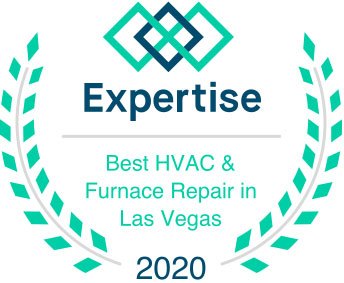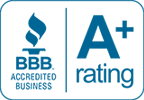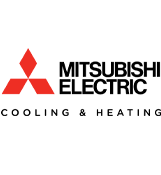
When purchasing new HVAC equipment, it’s important to balance initial costs and long-term savings. Energy efficiency ratings greatly simplify comparing one HVAC unit to another. The challenge is that there are many different ratings, so it may be unclear what each one means. Let’s explore everything you should know about the ratings commonly used in the U.S.
Seasonal Energy Efficiency Ratio
The seasonal energy efficiency ratio (SEER) measures efficiency over a typical cooling season. It’s not a measure of peak efficiency but rather the efficiency you can expect throughout a summer. In other words, an air conditioner with a higher SEER rating will cost less to run year-round. That makes SEER useful for consumers, and it’s why the Department of Energy (DOE) requires manufacturers to provide it for:
- Ductless mini-splits
- Central air conditioners
- Air-source and geothermal heat pumps
The DOE sets SEER minimums for manufacturers based on the type of equipment. SEER rating minimums are often different, for instance, for split than packaged HVAC systems. The DOE also sets different minimums based on the region: North, Southeast, and Southwest.
What’s the Difference Between SEER and SEER2?
The original SEER rating doesn’t accurately reflect static pressure in ducted systems. That’s a big deal because low pressure and air leakage can greatly undermine energy efficiency. SEER2 is a newer version of the rating system that does accurately account for static pressure.
The DOE adopted SEER2 as of January 1, 2023. Sometime in the future, all SEER ratings will use the new formula, and there won’t be any need for a distinction. In the meantime, manufacturers must provide both values. Note that you can’t compare SEER to SEER2. If you’re shopping for central AC units and heat pumps, then SEER2 will be more useful to you. If you’re researching mini-splits or other ductless systems, you can use either one.
Is It Always Better to Choose the Higher SEER or SEER2 Rating?
Yes, it’s always better to choose the higher rating from an environmental impact perspective. A higher SEER system will use less energy and thus lower your household’s carbon footprint. Of course, most homeowners have to make such choices within a budget. In that case, it’s a matter of minimizing your long-term costs. You may choose to spend more upfront because energy incentives and lower operating costs result in lower total costs.
ENERGY STAR
ENERGY STAR is a joint program between the DOE and the Environmental Protection Agency (EPA). The EPA sets its own standards, which are often much more aggressive than the DOE’s. Manufacturers have their equipment tested by independent labs to determine the SEER and other energy efficiency ratings. If a system achieves the EPA’s higher standards, it may receive ENERGY STAR certification. That label gives consumers peace of mind that an HVAC system is among the most efficient options within a class.
Energy Incentives
Energy incentives help to make high-efficiency HVAC systems more affordable, and they’re available through many sources. There are rebates available through manufacturers and local utility companies. Consumers can also claim rebates and tax credits through the government. For most incentives, ENERGY STAR certification is a core requirement.
Heating Seasonal Performance Factor
The heating seasonal performance factor (HSPF) is similar to SEER. The main difference is that it measures efficiency over a typical heating season. As with SEER2, there are HSPF2 ratings that factor in static pressure for ducted systems.
It’s important to understand that HSPF applies specifically to heat pumps. That includes central heat pumps and ductless mini-splits that provide heat. These systems are essentially two-way ACs. In heat mode, they transfer heat from the ambient air to the inside of the house. The higher the HSPF or HSPF2 rating, the cheaper the home heating will be.
One of the challenges of heating with air-source heat pumps is that there’s limited ambient heat energy during the winter. This is why HSPF tends to decline as the temperature drops. That reduced efficiency may not be a consideration in warmer climates. It’s in colder climates where dual-fuel heat pumps are more prevalent. These systems pair a heat pump with a furnace. When it’s too cold for the heat pump to be efficient, the furnace provides the heat instead.
Annual Fuel Utilization Efficiency
Heat pumps transfer heat energy. Furnaces and boilers, on the other hand, generate it. For these systems, the DOE uses the annual fuel utilization efficiency (AFUE). AFUE indicates the percentage of energy converted into heat that reaches the living spaces. A standard gas furnace has an 80 AFUE rating. That means it successfully converts 80% of the fuel it burns into usable heat; it wastes the other 20%.
Choosing a high-efficiency furnace or boiler can reduce fuel consumption dramatically. These models start at around 90 AFUE, and some are as high as 98.5. This is possible through condensing systems that limit heat losses through the flue. Some systems also have modulating gas valves and/or variable-speed air handlers.
AFUE and Electric Furnaces
AFUE applies to electric furnaces as well. The issue for consumers is that most electric furnaces are close to 100% efficient. Kilowatt-hours (kWh) indicate power usage and are a better indication of what an electric furnace will cost you. The lower the kWh, the cheaper the furnace will be to run. Manufacturers provide annual estimated costs, as required by law. You can also get a personalized value by multiplying the kWh by your local electricity rate.
EnergyGuide Label
The Federal Trade Commission requires HVAC equipment and other major appliances to have an EnergyGuide label. It’s a large, yellow label that will include the information a consumer needs pertinent to that particular technology. That includes annual estimated costs. You’ll find this label on the equipment itself and perhaps its packaging. Online retailers will provide the label as well. You may also be able to look it up on manufacturer, ENERGY STAR, and DOE websites.
Energy Efficiency Ratio
The energy efficiency ratio (EER, EER2) is a measure of peak cooling performance. There’s no seasonal component. It indicates how efficient the cooling system is when the ambient temperature is 95 degrees Fahrenheit. Generally, the SEER rating is more useful for homeowners. If you live in a hot climate, the EER provides additional information with which to compare air conditioners and heat pumps. It could, for instance, be the tie-breaker between two otherwise similar systems.
Coefficient of Performance
There’s no direct equivalent to EER for heat pump heating. That said, the coefficient of performance (COP) can be useful in this regard. That’s because it measures peak performance in a way that applies to both heating and cooling. There’s also a seasonal coefficient of performance (SCOP). Many European countries use SCOP rather than SEER and HSPF. There are advantages and disadvantages to both approaches. The U.S. and Canada tend to favor SEER and HSPF because they provide consumers with more granular and easily digestible information.
Further Assistance With HVAC Energy Efficiency Ratings
Polar Air & Heating, Inc. is a residential and commercial HVAC contractor based in Las Vegas, NV. We’re an EPA-certified company that employs NATE-certified HVAC technicians. Interested in mini-splits and heat pumps? We install those.
We’re also a Lennox Premier Dealer and Mitsubishi Diamond Contractor, but our team installs all HVAC brands. Our installers can assist you with energy efficiency ratings, rebates, and much more. Call today to schedule an on-site installation consultation.






















